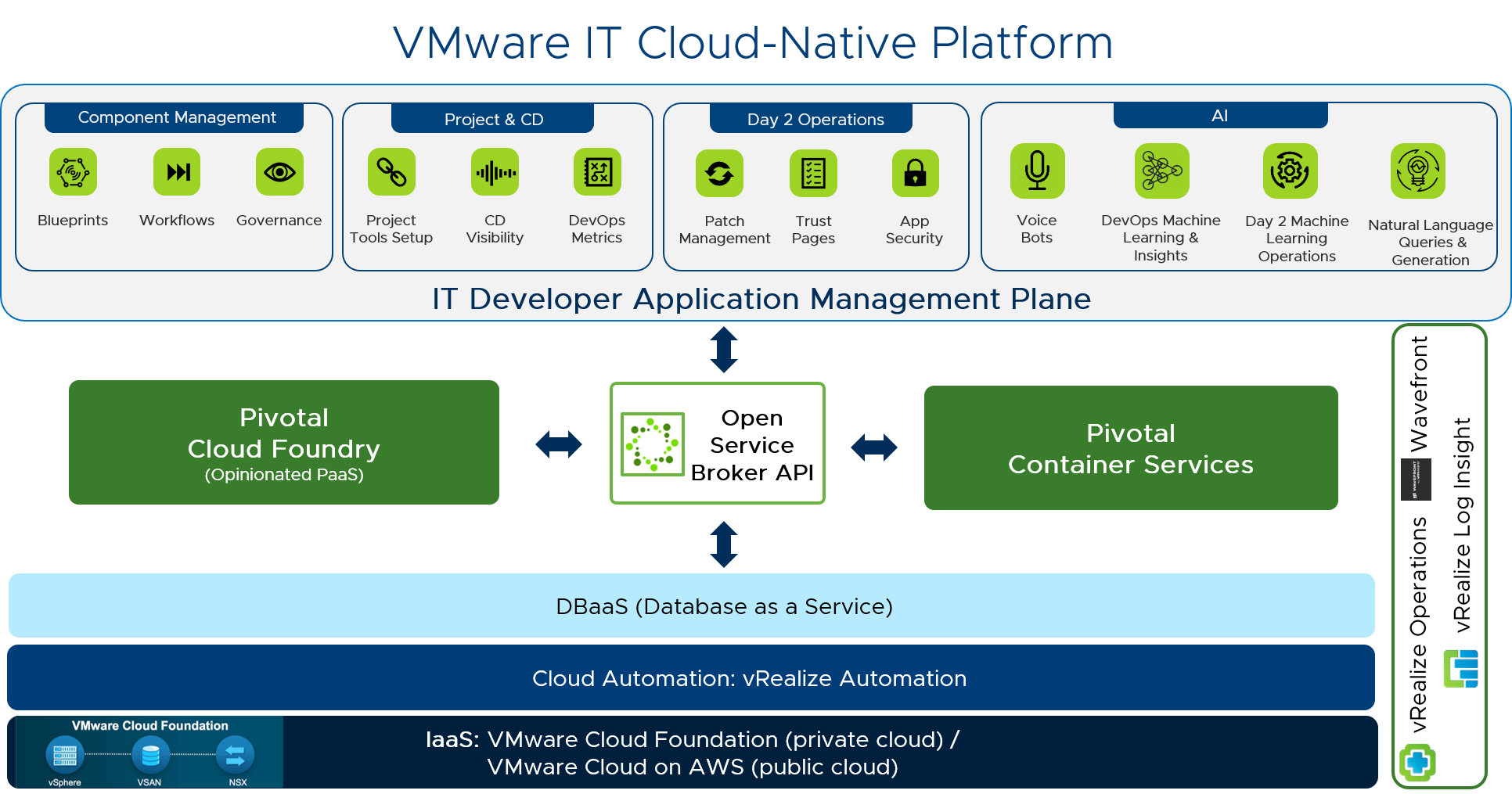by: VMware Senior Director, R&D Gopinath Anantharaman, VMware and VMware Senior Director, IT Applications Balaji Parthasarathy
For the past 20 years, VMware has been evolving to meet the demands of a growing company with a global customer base and diverse product line. VMware IT must continue to rapidly progress to enable VMware to deliver software and services with higher quality and greater efficiency. The key to our current and future success is leveraging the power of the cloud.
In pursuit of further agility, we focused on transforming our software delivery process and architecture practices. To improve software delivery, we implemented a DevOps model that enabled small, independent teams to quickly build, test, and deploy to production. Agile development, supported by continuous integration, continuous development (CI/CD) best practices, supports the automated deployment of software to production. For operational consistency, we deployed a common infrastructure that ran both on-premises and in the cloud. (For more on this journey, read the DevOps and Developer Application Portal blogs.)
Organizational Approach
To be more effective in building and operating cloud-native services that use the DevOps model, we reorganized our horizontal functions (architecture, business analyst, development, quality, operations) to vertically aligned service teams. Each team is self-contained with the required skill sets and has full accountability for its results, from development through managing business KPIs. Teams work at the pace required by the business functions they are supporting and release code in bite-sized chunks. We drive alignment through the teams by strong API contracts.

Architecture
Cloud-native applications are microservices-based and deployed to production through a fully automated CI/CD pipeline to the private or public cloud. These loosely coupled systems have strong API contracts between them to facilitate interaction. Objective is to optimize the time it takes from the idea stage to production.
This architecture enables us to take advantage of the flexibility of the cloud through rapid provisioning and auto scaling, which allows small teams to iterate and deploy to production much faster.
All our greenfield applications are built on a cloud-native architecture platform. Our mobile, artificial intelligence, and IoT applications are all cloud-native. We have developed 30+ mobile apps in the past two years.
When we began working on traditional applications, our strategy is to decouple modules from the application and decompose them into microservices. For example, we decoupled the user login and user profile module from MyVMware.com, a highly complex, customer-facing, and business critical ERP application. We have achieved high availability for User Profile Services, with 10X+ increase in performance (400,000 transactions/hour against 65,000/hour [2X]) and a response time of 30 ms with 10X load against 3 seconds with 2X load earlier. We can scale up and down our platform on demand. Other MyVMware modules, such as license and support management, will follow.
Technology
We standardized on Pivotal Spring Boot, an open-source, rapid application development framework for Java applications. Pivotal Cloud Foundry gives us an opinionated Platform-as-a-service (PaaS); the apps are architected to run in an active, active configuration in multiple data centers. Pivotal Container Service (PKS) is being used to simplify the development and deployment of Kubernetes clusters.
To help drive developer productivity, our platform offers database-as-a-service (DBaaS) and integrated monitoring services using VMware Wavefront, VMware Log Insight, and VMware vRealize Operations.

Increasing Agility with Cloud-Native
Some of the tangible benefits of our agility include a 95% ticket reduction as a result of self-service capabilities, project or service onboarding completion in less than a day, zero issues/outages due to configuration drift in the infrastructure or application layer, and easily extend our capacity based on the load.
As VMware moves into its third decade of operation, IT continues to innovate and adopt new ways to more rapidly deliver software to the business. Cloud-native architectures, along with DevOps and CI/CD, are giving IT the opportunity to deliver higher quality, more resilient software that aligns to changing business priorities.
VMware on VMware blogs are written by IT subject matter experts sharing stories about our digital transformation using VMware products and services in a global production environment. Contact your sales rep or vmwonvmw@vmware.com to schedule a briefing on this topic. Visit the VMware on VMware microsite and follow us on Twitter.



